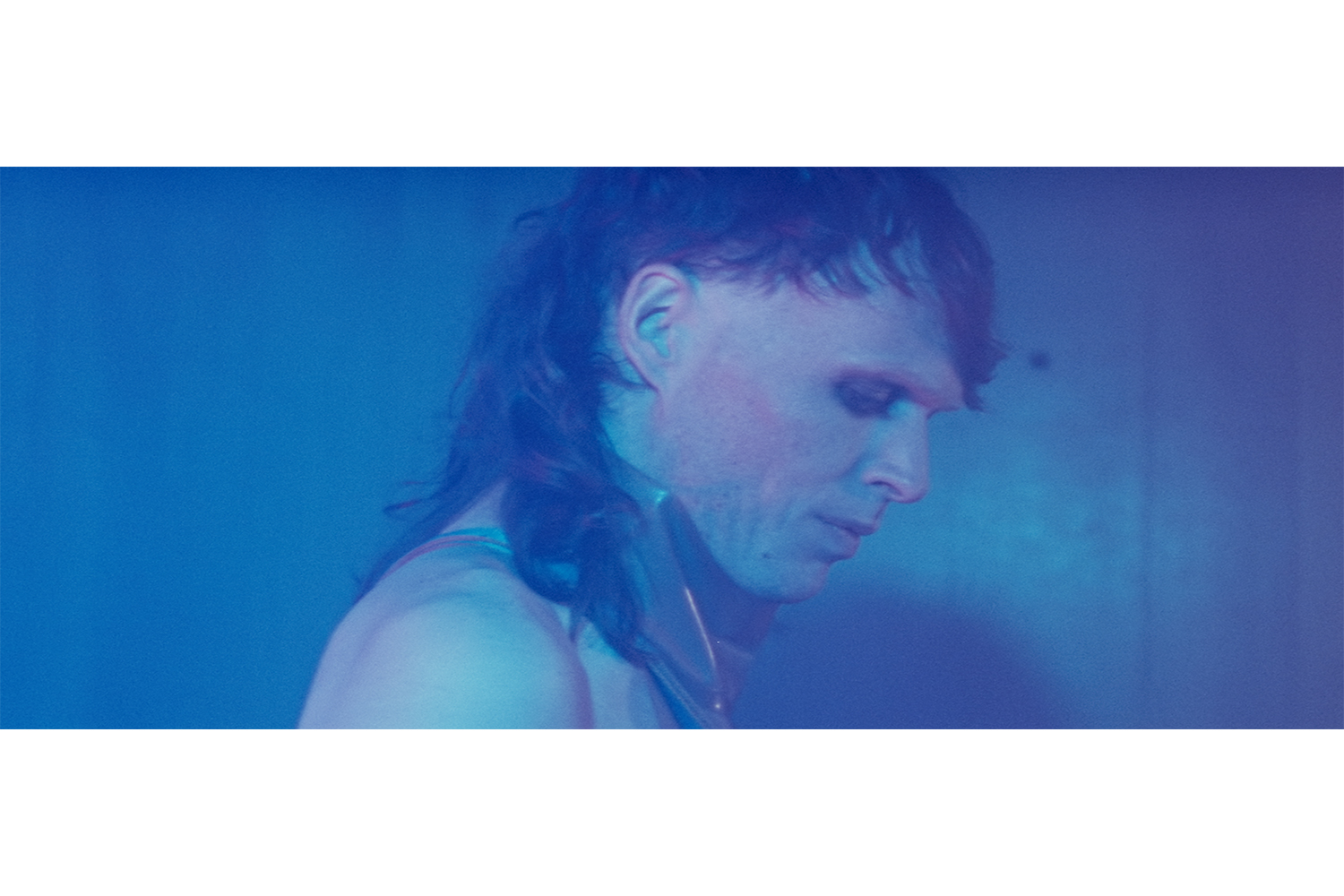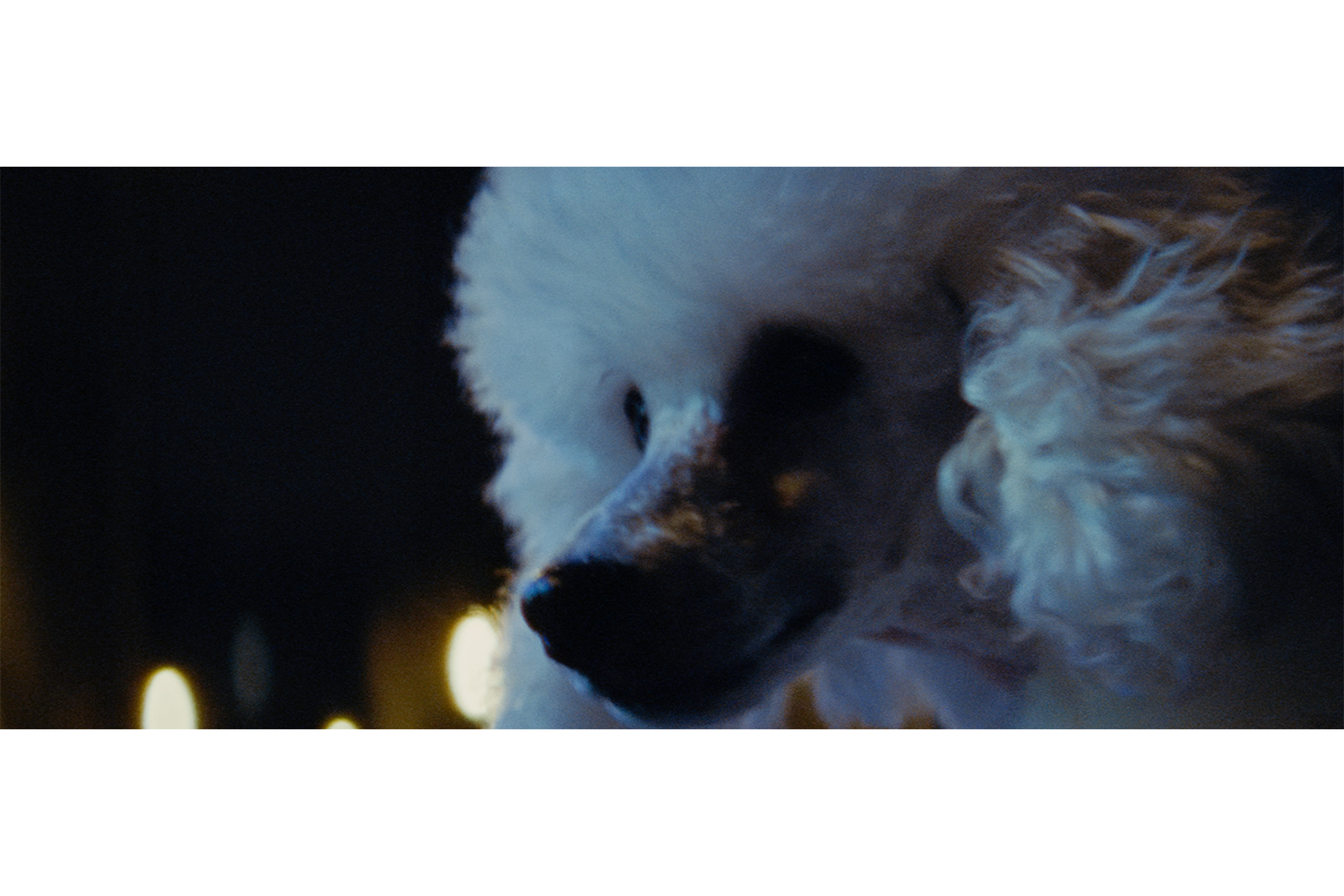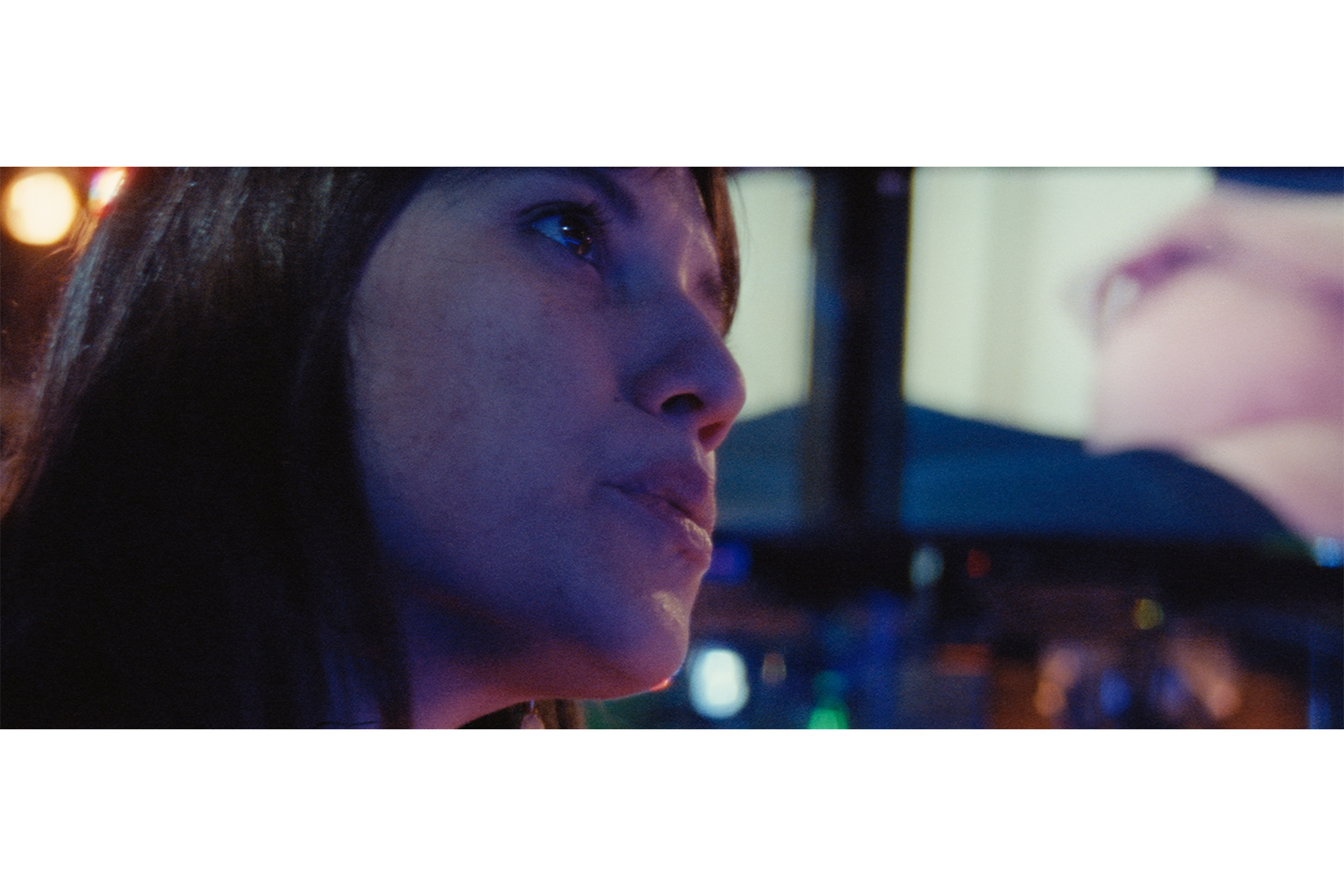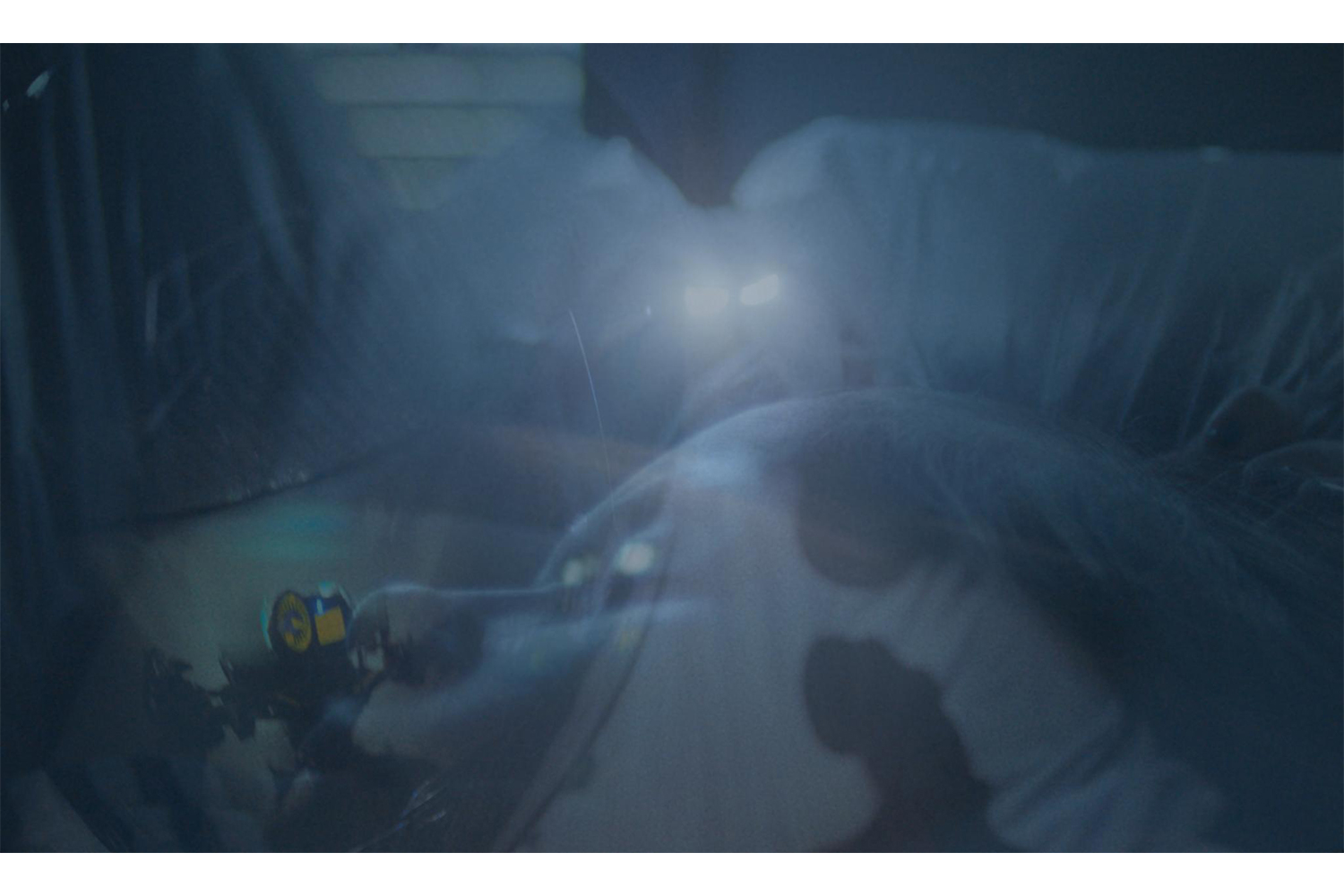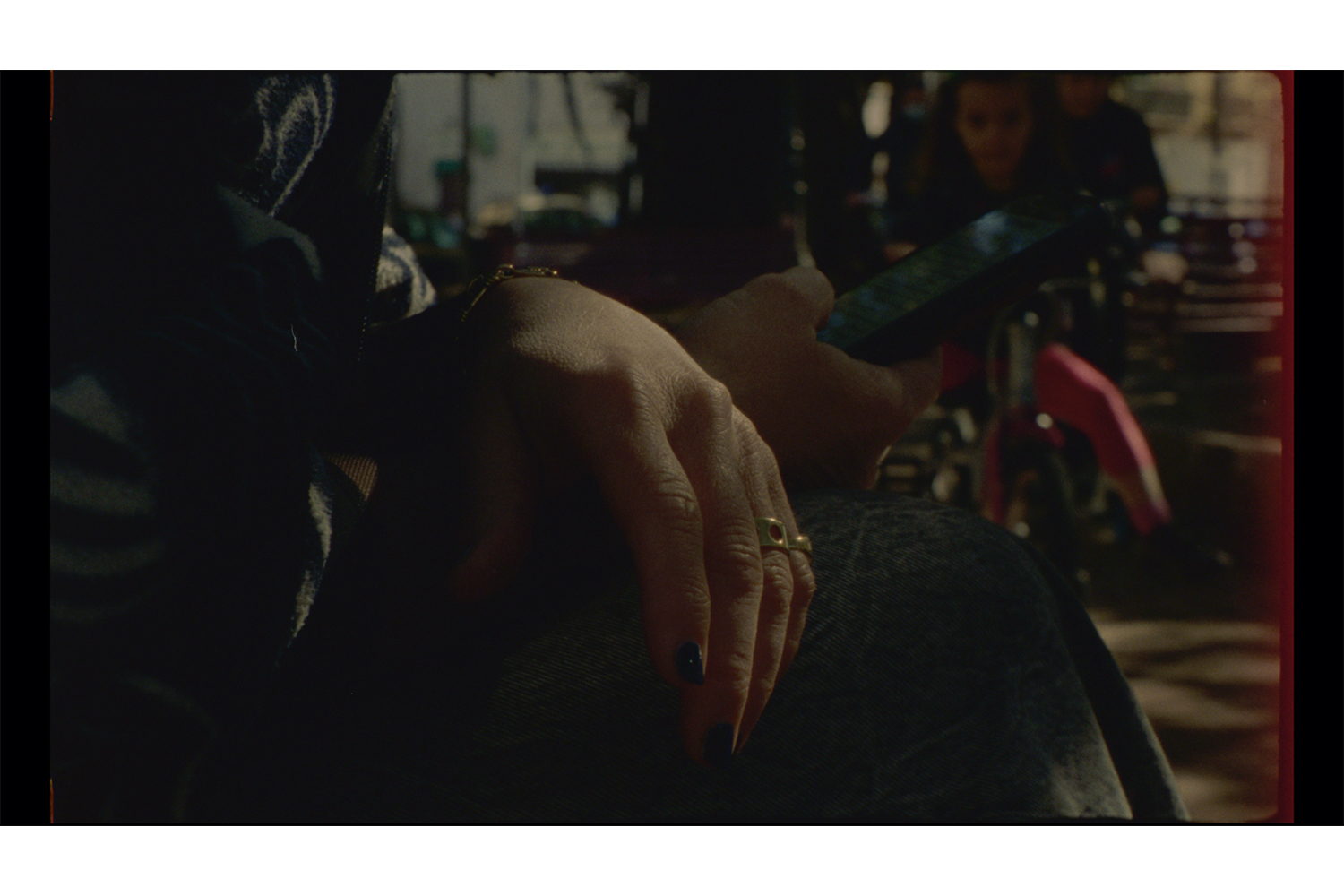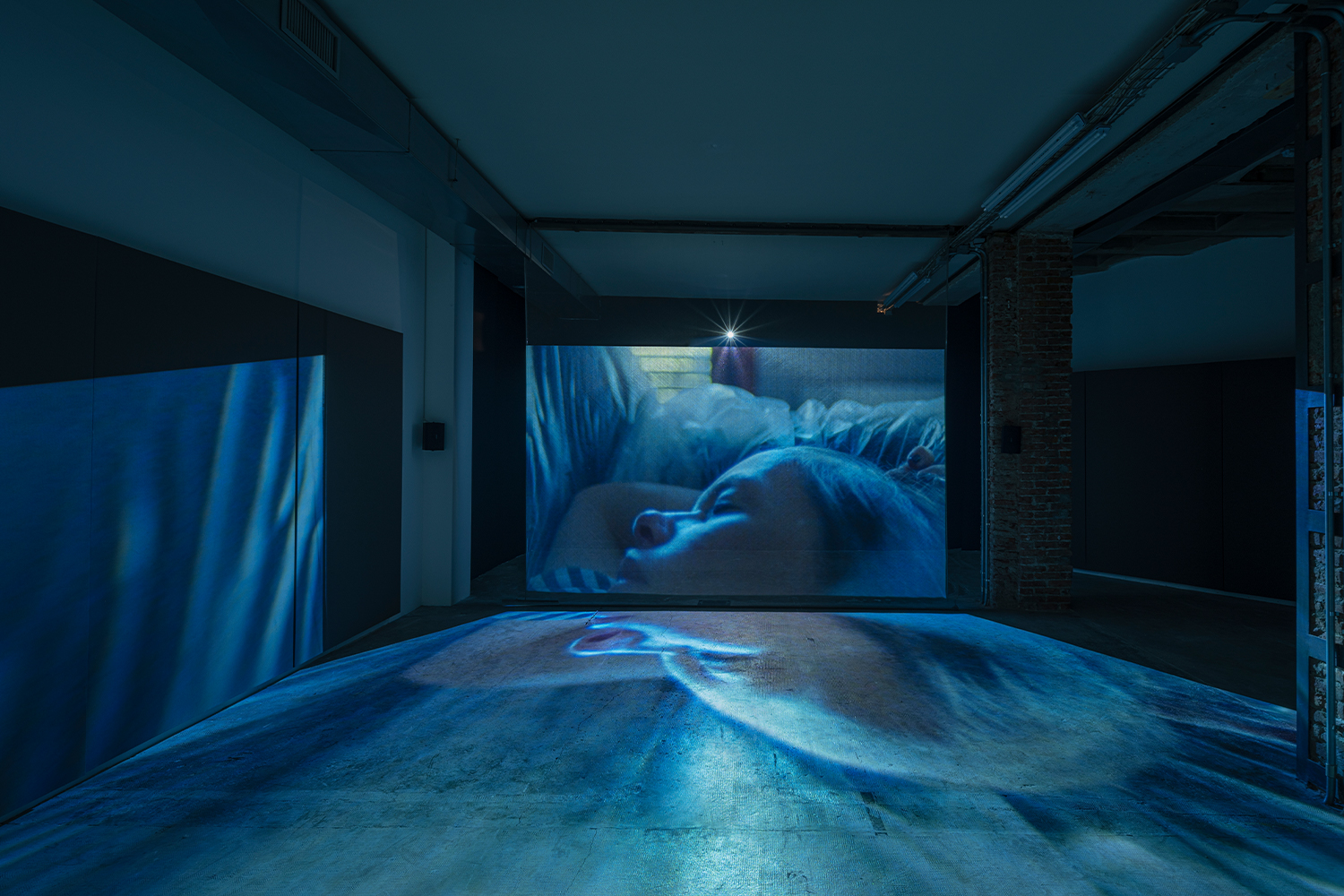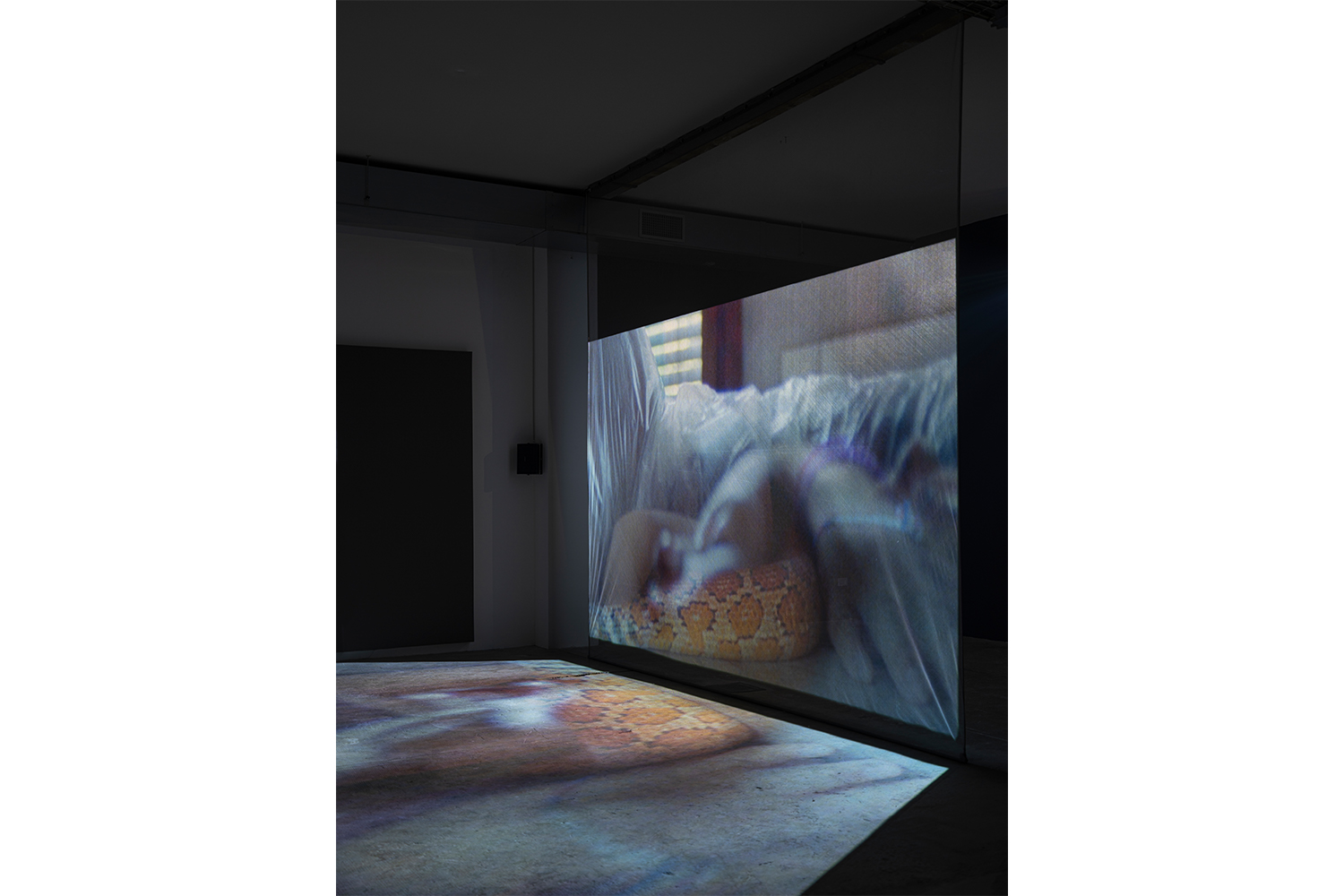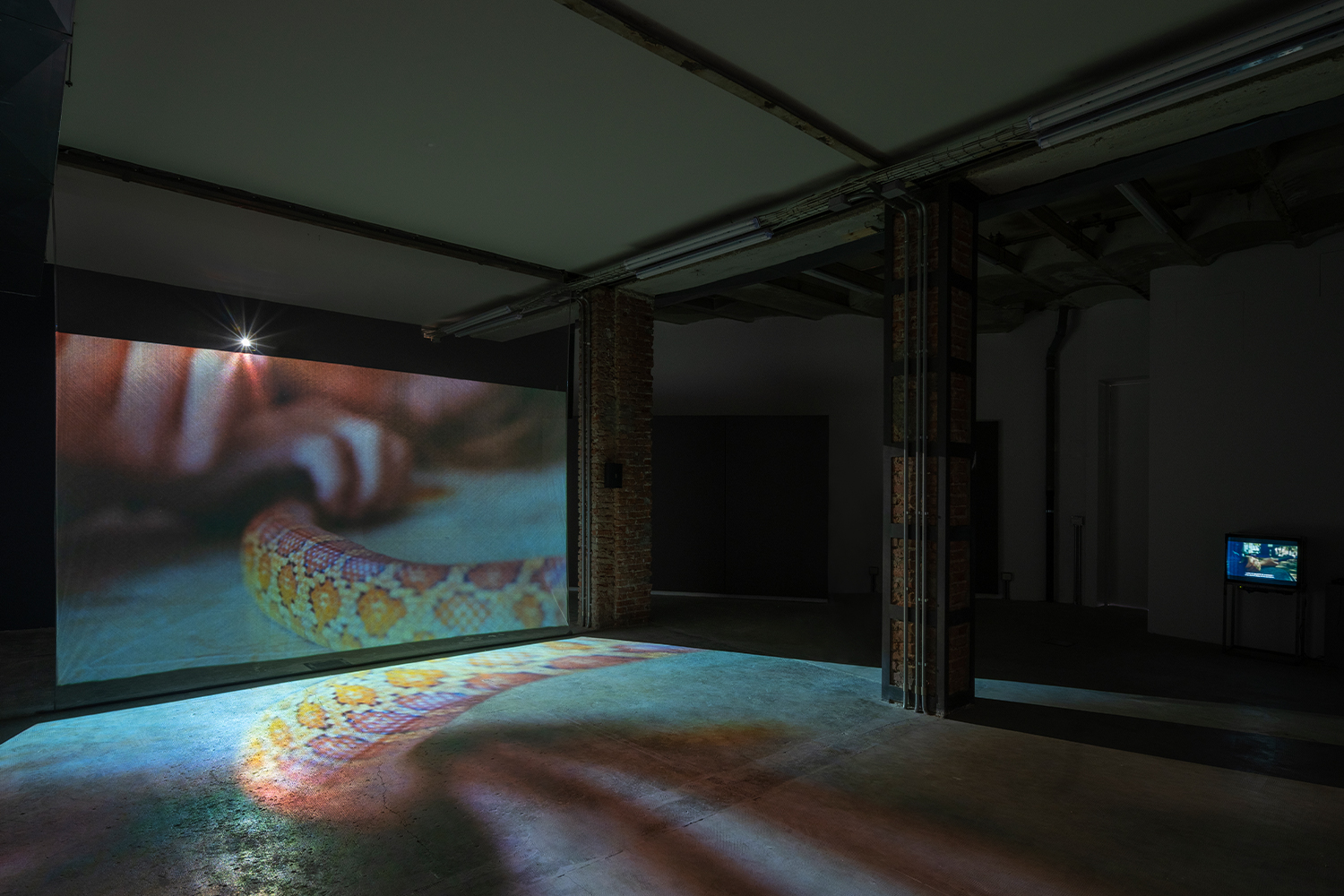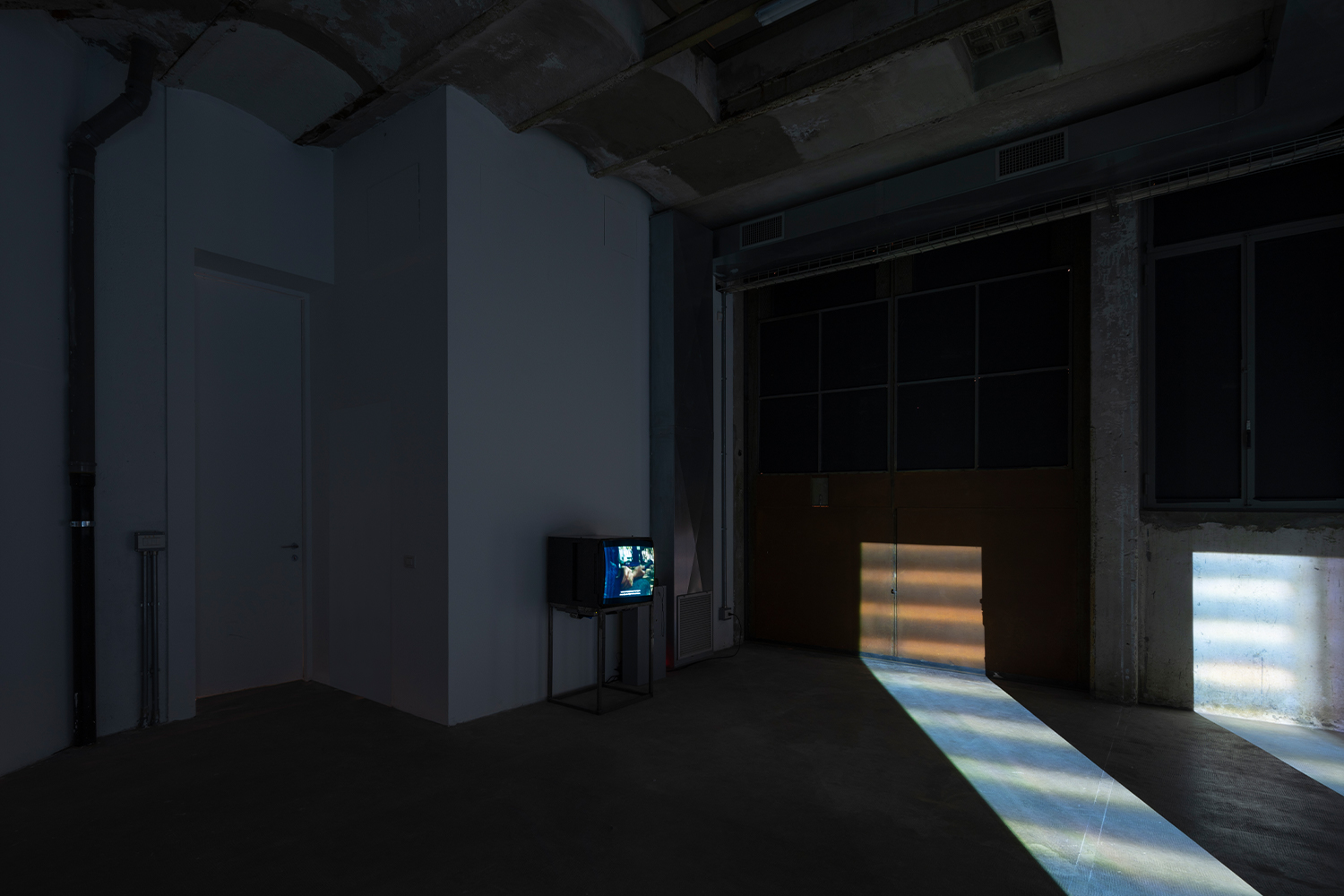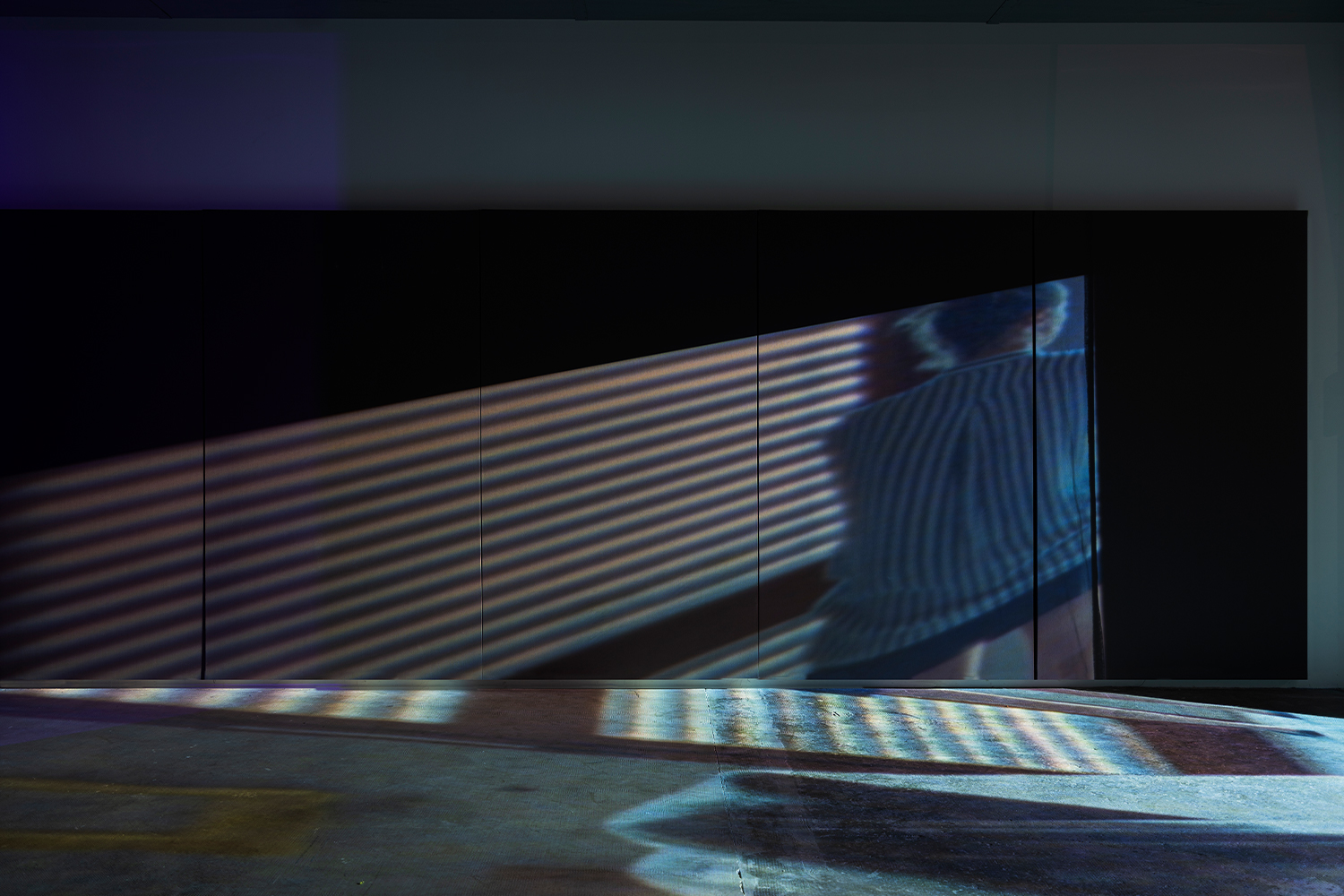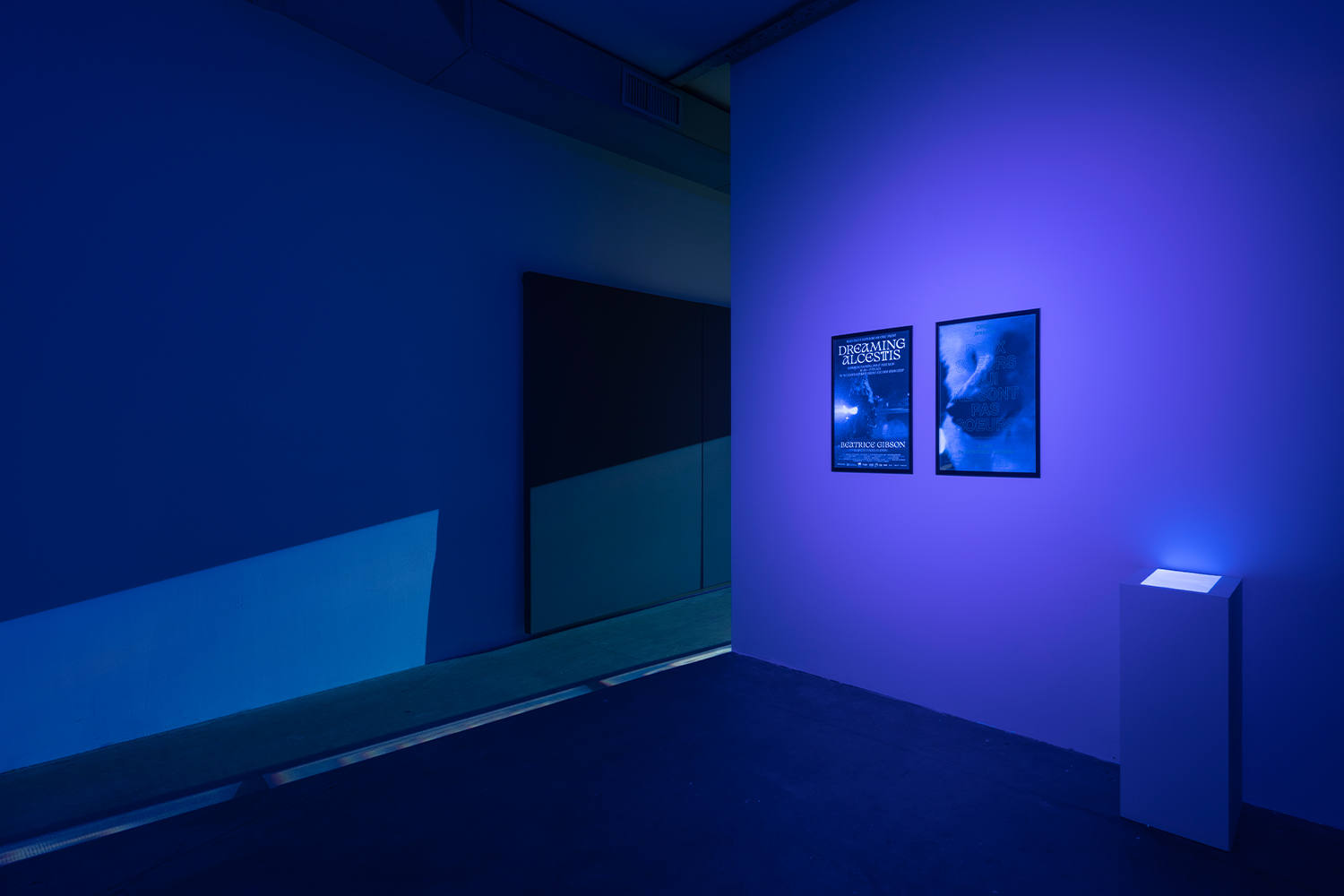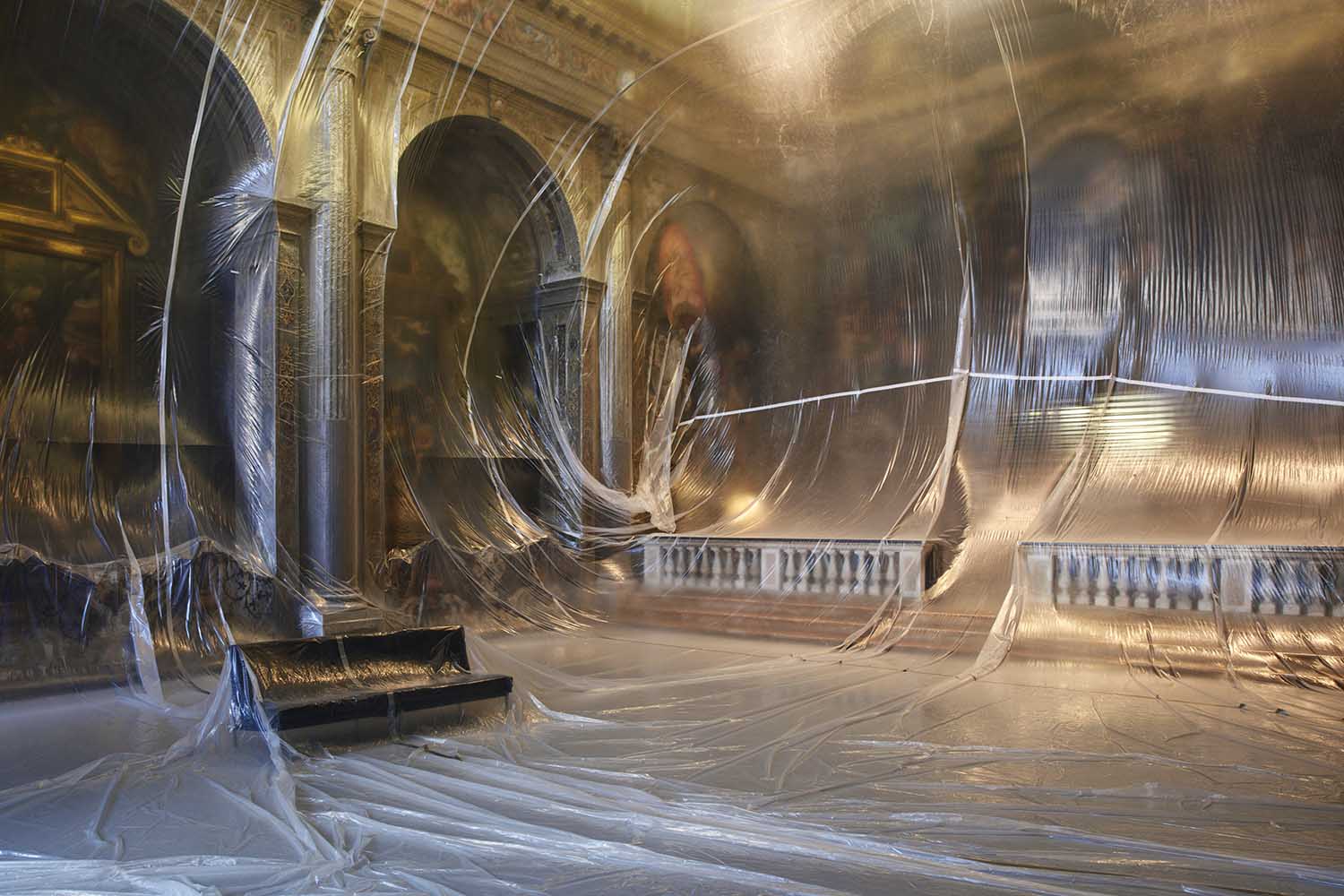On high ground overlooking Paris, poet Alice Notley reads the words, “I stand here in whose eyes / the name of light is audience.” Reading from her poem, [I stand here in whose eyes], she is a guiding voice in Beatrice Gibson’s Deux soeurs qui ne sont pas soeurs (Two Sisters Who Are Not Sisters, 2019), one of three moving-image works on display at the artist’s first solo show in Italy, “Dream Gossip.” Notley articulates her position as subject, implicating our illuminating gaze and naming that invisible dynamic that separates and connects us. This space between us — audience/subject, and the collective “us” — is a territory Gibson is keen to traverse.
The crux of the exhibition, Dreaming Alcestis (2022), invites viewers to eavesdrop on the collective dreaming of a long-dead queen and two exhausted parents. Gibson conjures Euripedes’s Alcestis, the eponymous queen who sacrificed herself for her king before being returned from the dead by Heracles, no longer able to speak. “A heroine by subtraction,” she is the object which enables the narrative realization of her masculine counterparts.
On entering the exhibition, sound meets us before image: the crack of arrhythmic drums marks the second resurrection of Alcestis. Though speechless as her Euripidean self, Gibson’s Alcestis is loud with agency; the guttural roll of the motorbike an amplification of her silence to noise. Tearing through the night, she swerves erratically. Clad in leathers and masked by her helmet, Alcestis blinds the camera with her headlights, obliterating her own image. We ride with her, chasing or being chased, drenched in her projection which is backlit through holo-gauze and thrown into the center of the room.
Her image becomes the body of someone sleeping. In a newly inhabited apartment (a detail that mirrors Gibson’s own relocation from post-Brexit Britain to Palermo, Sicily), two children and their mother cross the frame. As the parents attempt sleep, a sense of anxiety rises in fragments of speech — lost keys, something (a house, a planet) burning, an admission, “I miss capitalism.” They whisper for Alcestis and an oneiric chorus refuses quiet: glass crunching beneath feet, the warm chatter of Palermo at night, animals trilling, the quake of a boat horn. Like the state between sleep and consciousness, the sounds are amorphous and pliable, shifting as we recognize them.
Little happens in the film, which, despite its high production, subverts a cinematic way of seeing: denying narrative, contaminating the boundary between audience and image, and engaging sound as the driving force over the visual. There is the sense that something — Alcestis, death, Brexit, the end of the world — is chasing them, a generalized hostility that must weigh heavy on the shoulders of anyone endeavoring to raise children, or simply hoping for a future. The parents’ sleep is disrupted by their enmeshment in a world of noise. Rather than seeking to quiet it, however, Gibson takes pause to listen. It is moving to witness such a simple act.
Still, it is a shame that the setting of this ode to dreaming does not allow the audience to rest with it. The gallery offers no seating, which is always disappointing for longer moving-image works, but particularly so for a film that begs for horizontal engagement. Dreaming Alcestis is undoubtedly opaque, and may need to be watched more than once before viewers relinquish the desire to find a narrative thread. I wanted to spend more time with it, to lay in the light and let the ambisonic audio emerge differently for me with each replay. Its abstraction, however, is aptly contextualized by the two accompanying films.
To the side of the focal installation, a television plays a short video, Dear Barbara, Bette and Nina (2020). Gibson sits in a street in Palermo, her head cut off by the frame. From her phone she reads a letter addressed to her intellectual forebears: Barbara Loden, Nina Menkes, and Bette Gordon. Conjuring their voices and naming capitalism as the common enemy, the work is a grounding footnote to the somatic Dreaming Alcestis.
A third film, Deux soeurs qui non pas soeurs (2019), further explores Gibson’s interest in citation. A loose elaboration of Gertrude Stein’s 1929 screenplay of the same name, Deux Soeurs brings together perspectives on the future, pregnancy, motherhood, the ethical predicament of raising children, and our responsibility to each other. The work is as playful as it is sorrowful — the fruitless search for a lost poodle acting as a through line for the film. Each subject begins by looking into the camera, marking their agency with what Agnès Varda calls the first feminist gesture. They share confessions, dreams and poems, weaving in and out of each other’s frame. Notley reads, “I hadn’t seen clearly until I enacted her,” articulating the film as a collective portrait of solidarity across struggle.
The three films work as a map of the artist’s method of collective imagining; borrowing words, sounds, and visions across time. There is a sense of irresolution, but, indeed, crises continue to accumulate, the feminist struggle is ongoing. In “Dream Gossip,” Gibson offers experiments in looking and being otherwise to the capitalist and neoliberal ideologies of accumulation and individualism. A carrier-bag of practices — friendship, solidarity, dreaming, play, listening — accumulate on film.

